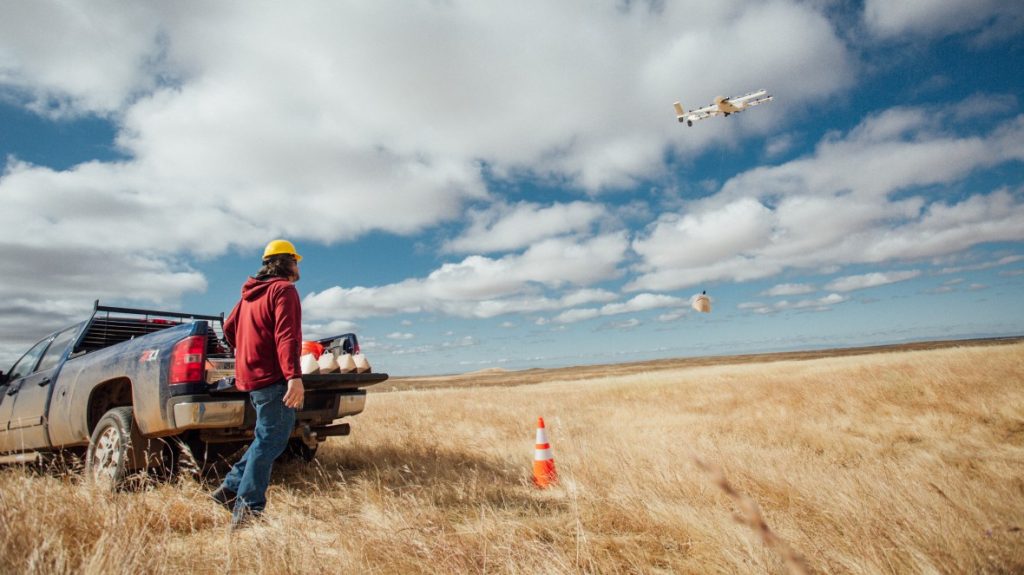
Flying a drone is easy enough. Ensuring that thousands of them flying through the same airspace don’t crash into each other, though? That’s a bit harder. Fortunately for the future of drones, Alphabet’s X laboratory has been developing its own solution.
The vision of a sky filled with autonomous aircraft isn’t as ridiculous as it once seemed. Amazon has already made genuine deliveries using its quadcopters in the U.K., and a startup called Zipline has shown that its winged drones are able to deliver medical supplies to remote health-care centers in Rwanda. Add the prospect of surveying and infrastructure inspection aircraft to the mix, and it’s more believable than ever that drones could take off in great numbers before too long.
But the big hitch preventing a the sky from filling with drones is making sure happens in an orderly fashion. Because many of them will fly at relatively low altitudes inside small footprints of cities, the chances of a collision will become rather high as numbers increase. In fact, a lack of drone traffic control is often cited as one of the biggest barriers facing the adoption of aerial delivery.
But Alphabet’s Project Wing, the part of the company’s moonshot laboratory known as X that's working on drone delivery, has been working with NASA and the Federal Aviation Administration to develop new systems that could allow the unmanned aircraft to avoid colliding with each as they zip through the air. We’ve previously reported on NASA’s experiments to build similar kinds of systems, but on Tuesday Alphabet’s researchers tested its new technology at Virginia Tech’s FAA-approved drone test site.
The experiment used six drones in total. Three belonged to Project Wing, picking up and dropping off packages as though they were making real deliveries. Meanwhile two drones from Intel and a third from Virginia Tech carried out simulated search and rescue missions. Each aircraft was piloted by its respective owner, wirelessly sharing flight path information with Project Wing’s "unmanned aircraft systems Air Traffic Management" software—UTM for short—as it went.
The system constantly analyzes where the drones are heading, notices when collisions might occur, plans new routes, and then updates their flight paths accordingly without the pilot having to take action (though it does provide operators with notifications along the way to let them know what’s happening). The same system would also in theory allow the FAA to dynamically add no-fly zones so that drones could avoid, say, an area where there was fire.
The good news: the six drones didn’t collide. The bad news: there were only six of them. But the Project Wing team says that it plans to “support more simultaneous flights and navigate environments of greater complexity” in the future. Even so, don’t expect such systems to immediately usher in widespread delivery drones. The FAA doesn’t expect to finalize its collision-avoidance standards until at least 2019.
(Read more: “Delivery Option: Drone. Arrival Estimate: 2020,” “An Amazon Drone Has Delivered Its First Products to a Paying Customer,” “Air Traffic Control for Drones”)

